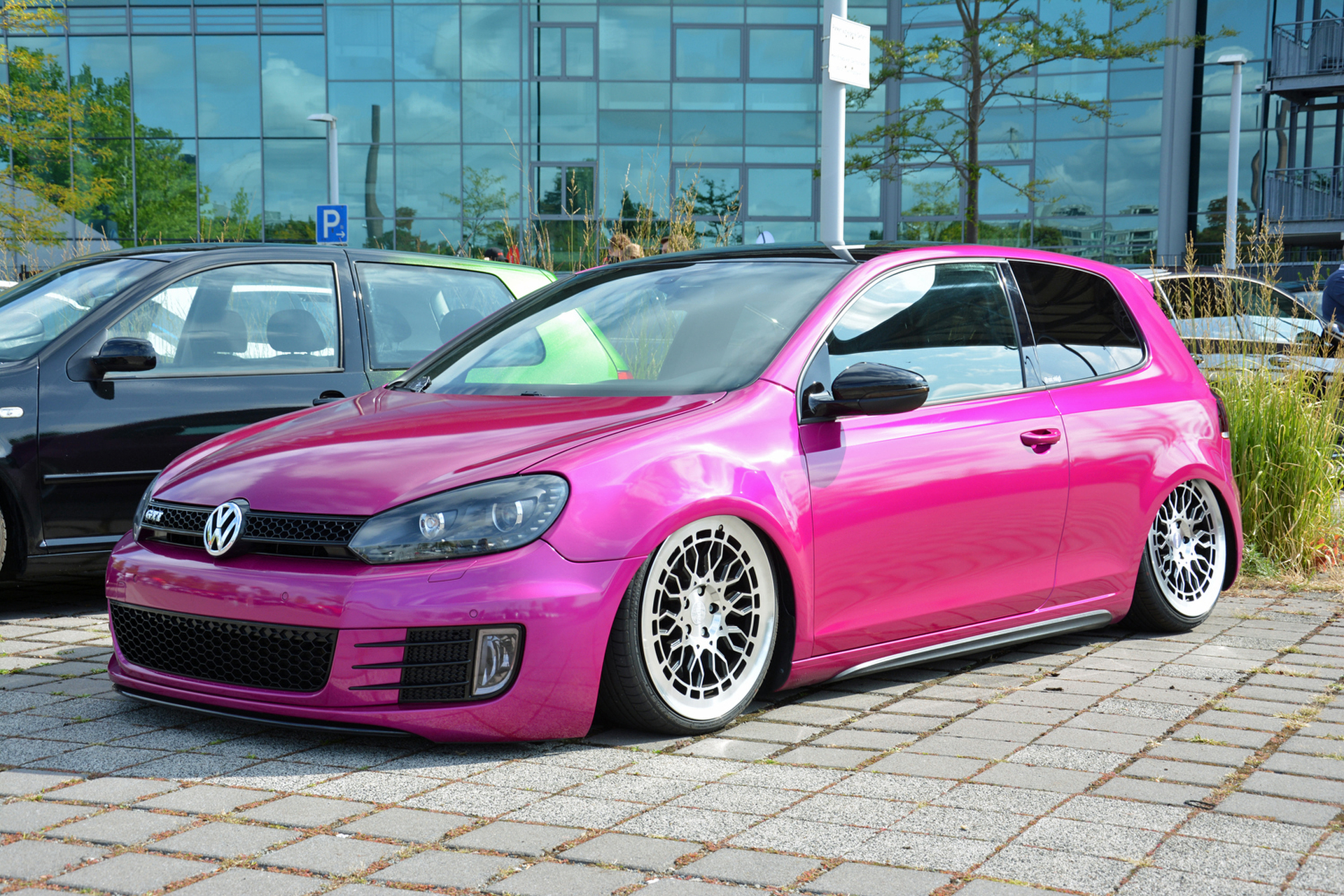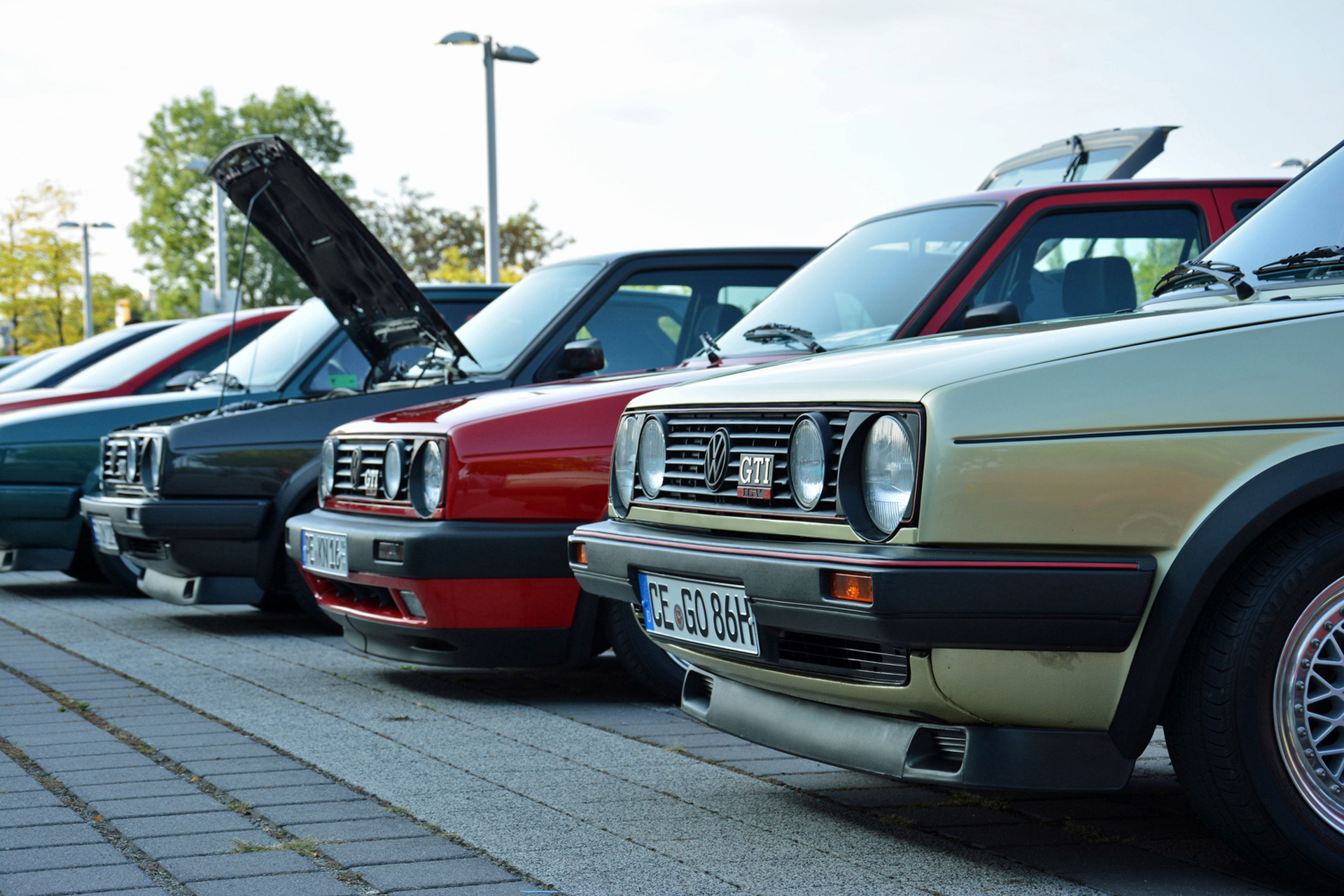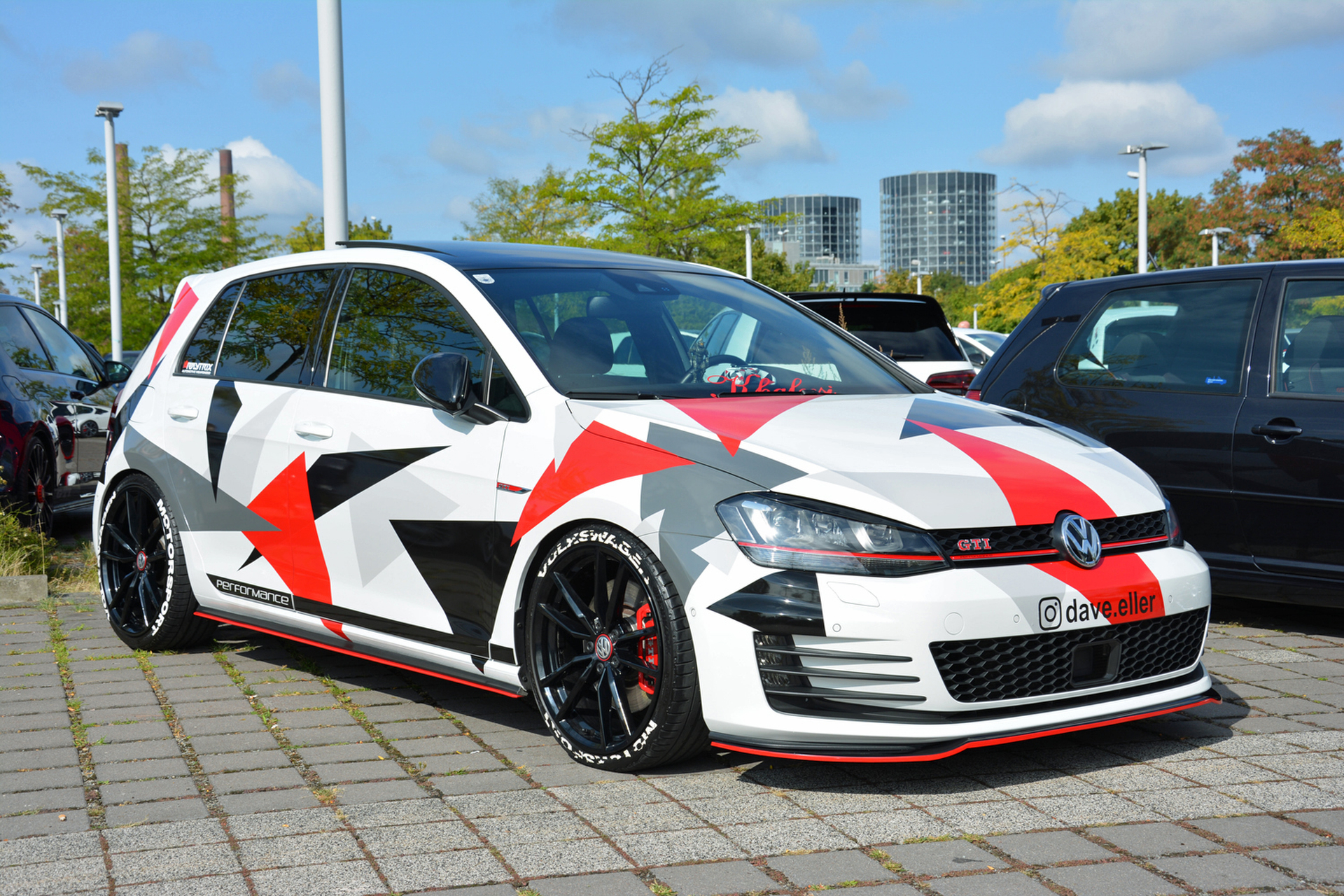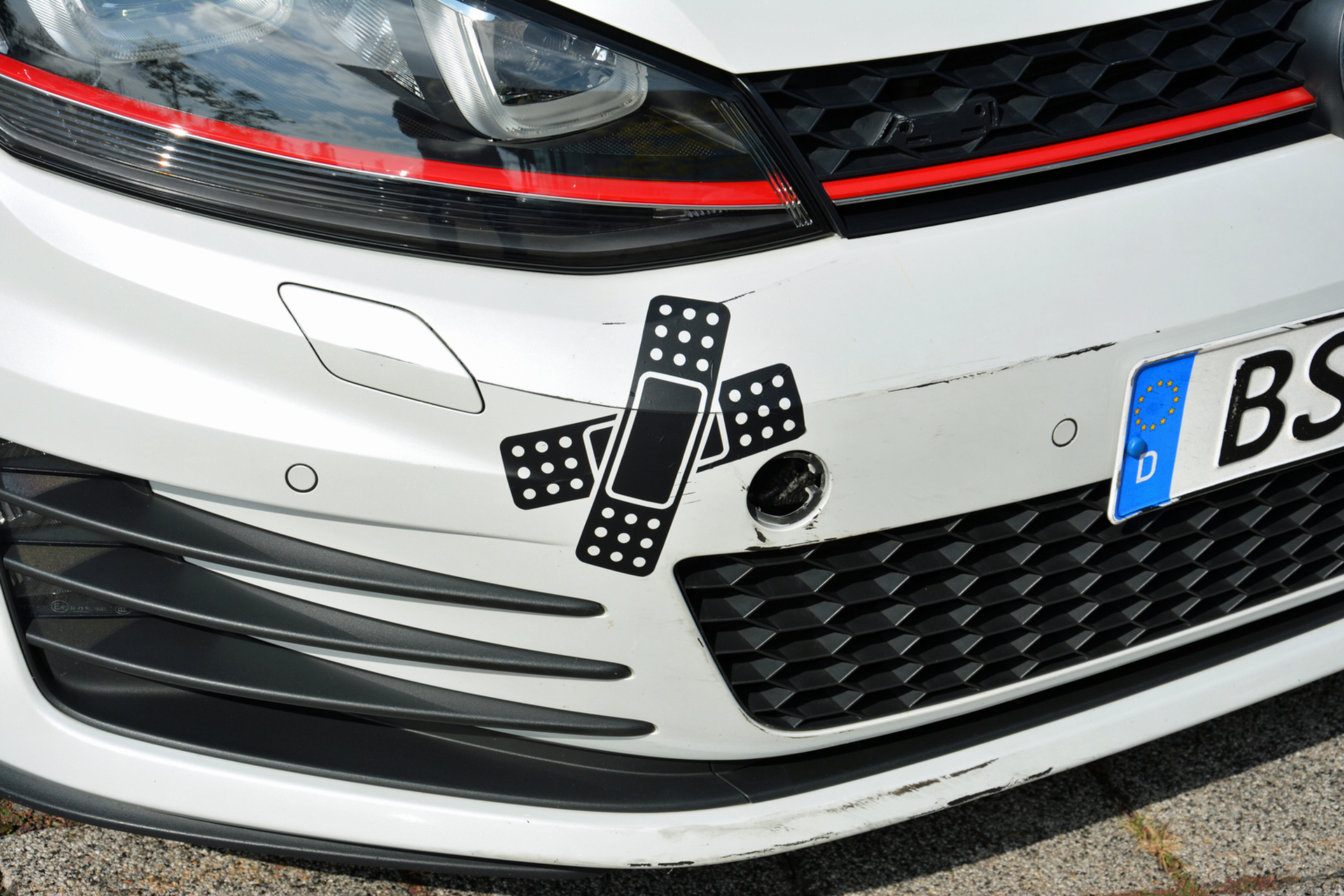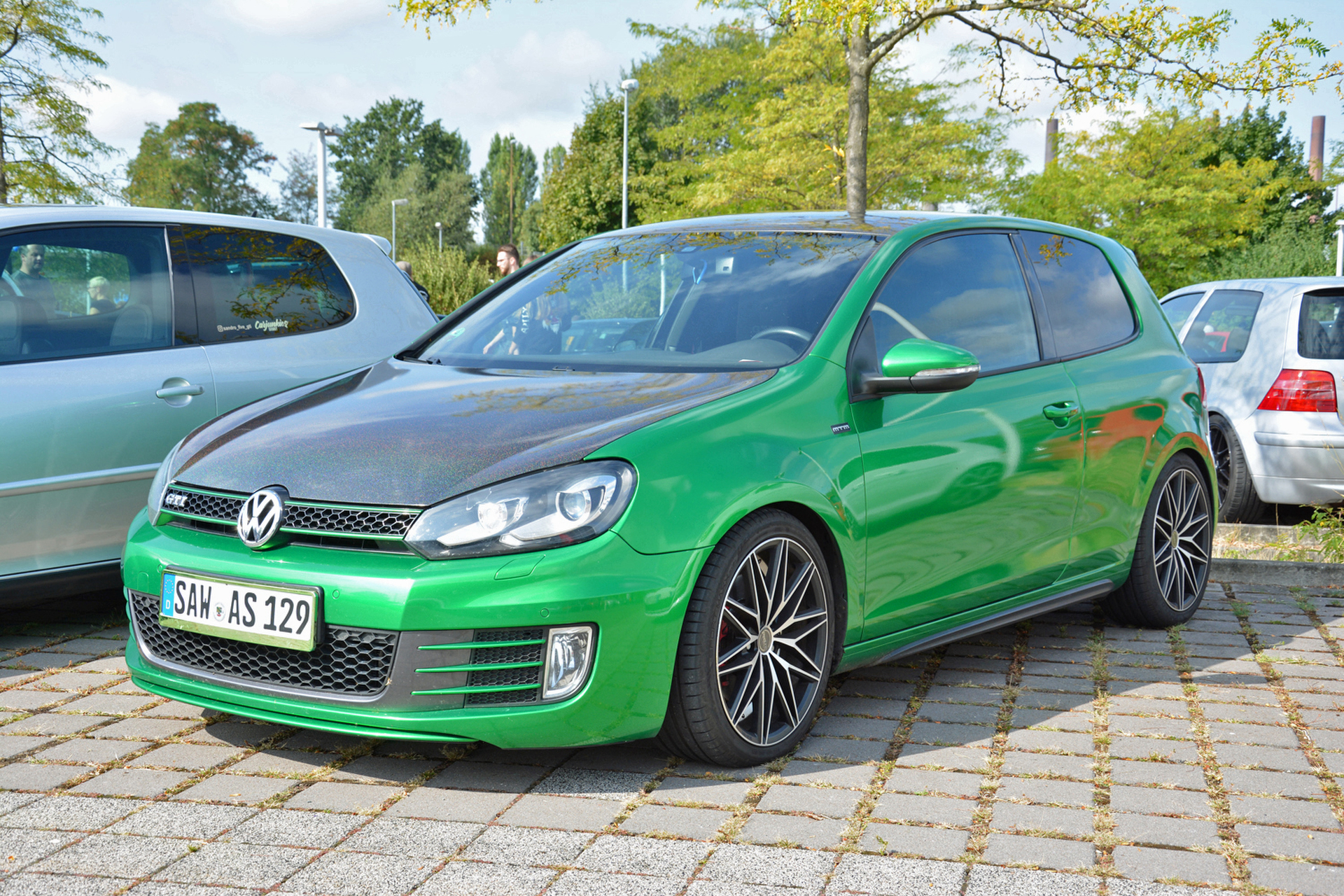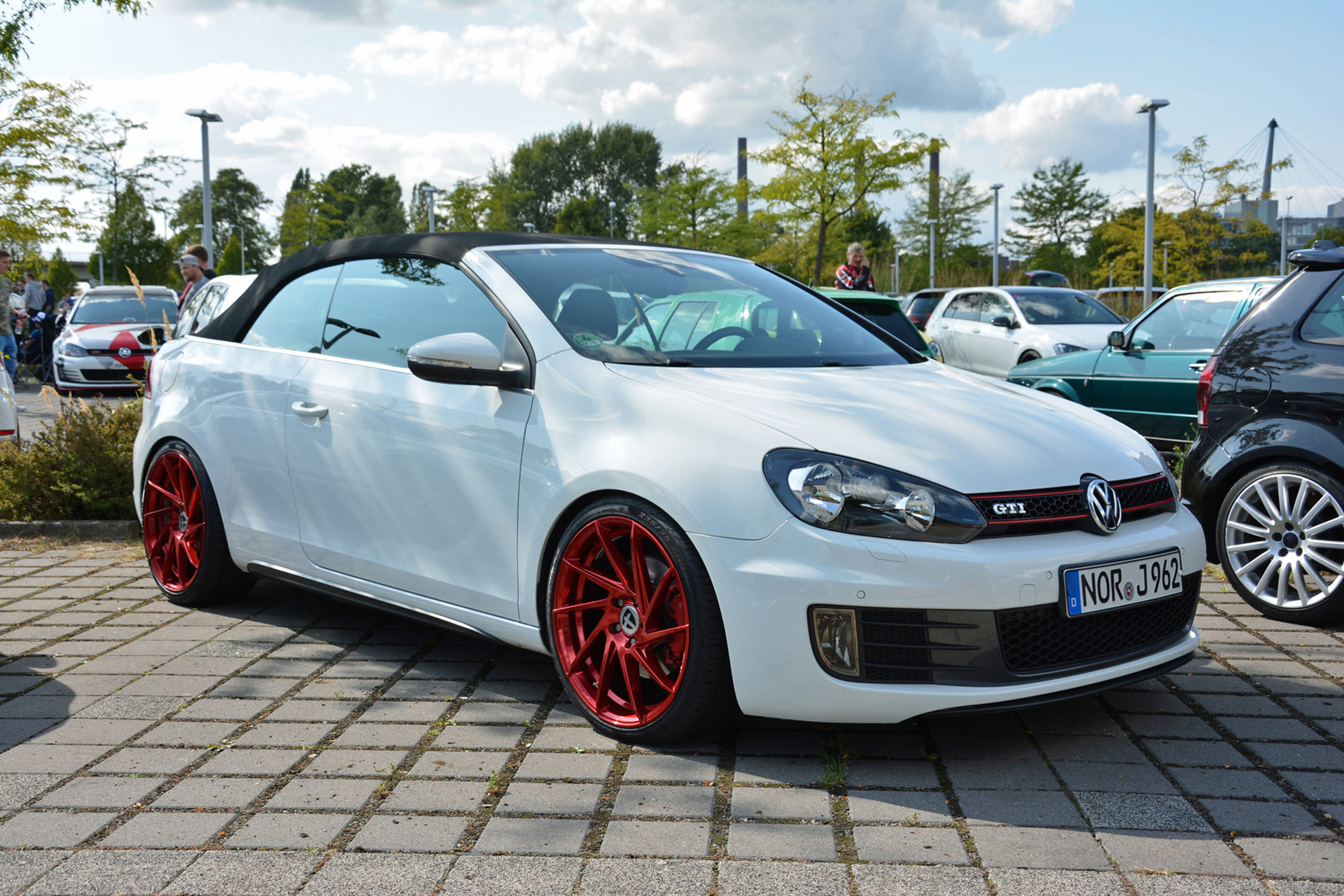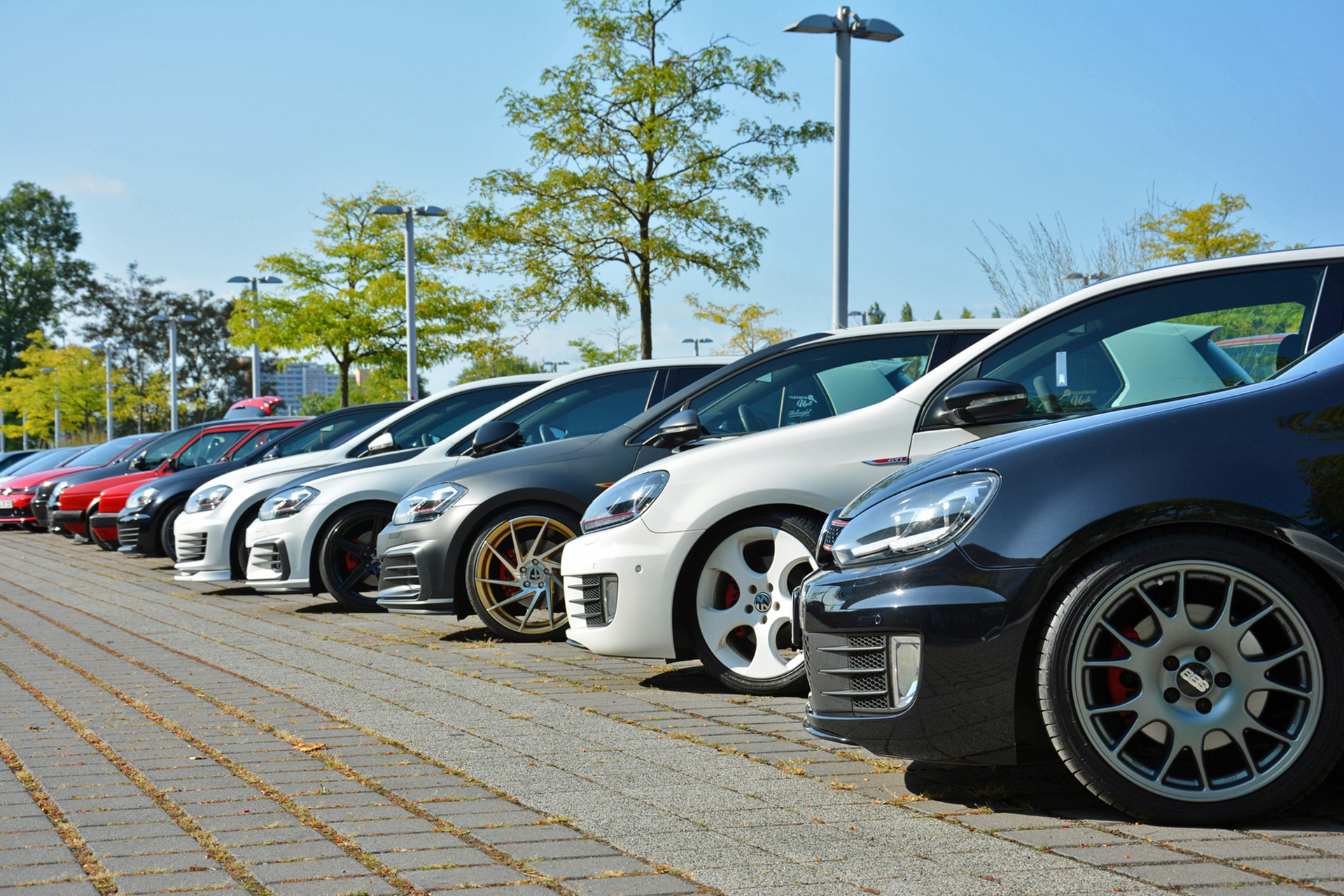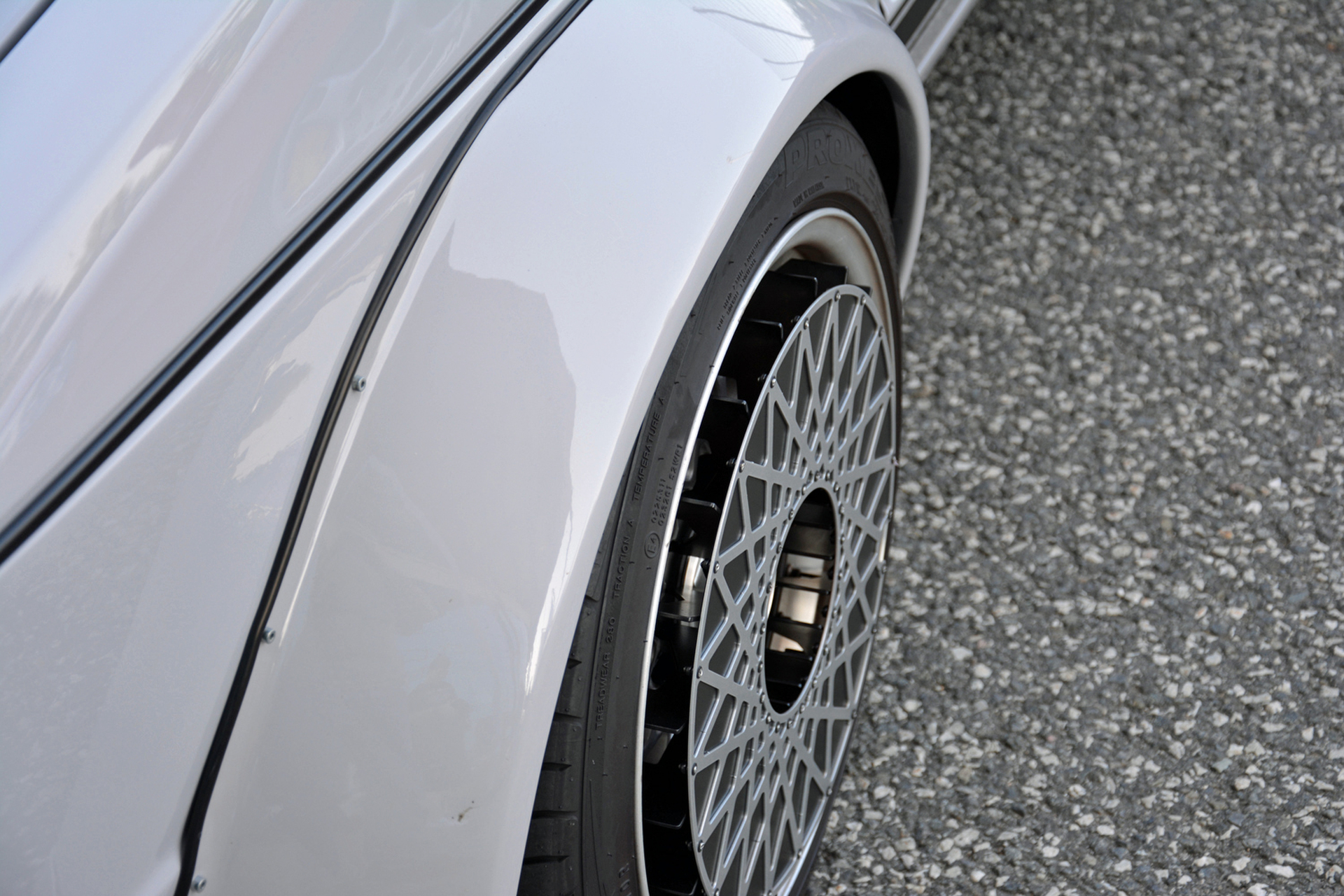Picture what it’s like to be stuck in a traffic jam.
There are cars in front of you, behind you, and on both sides of you, and traffic moves at a glacial pace. Now, imagine that every car within your line of sight is a GTI-badged Volkswagen. That’s precisely what we experienced while driving to the GTI Coming Home event held in Wolfsburg, Germany.
Organized by Volkswagen a stone’s throw from its historic factory, the GTI Coming Home event is a celebration of the world’s most-loved hot hatch. The Golf-based cars – all seven generations of them – ruled the roost but every member of the GTI family came out to play on this warm late-summer day. We took it all in from the driver’s seat of a brand-new, fully-stock Polo GTI, a sub-Golf model not sold in the United States. We also spotted a few Scirocco, Up, and Lupo GTI models.
It’s tuned to make 255 horsepower – 55 more than stock – and it spins the front wheels through a six-speed manual transmission.
Our Polo GTI turned heads like a deer nonchalantly living among a pack of wolves. It wasn’t the shiny red paint that made it stand out; we spotted much wilder colors while meandering through the endless rows of cars, including purple and neon orange. It was a misfit because nearly every single one of the roughly 4,000 cars that drove to the event from all over Europe was modified to one degree or another.
With the exception of Volkswagen’s press loaners, we couldn’t find two identical GTIs. This subset of the automotive enthusiast panorama worships their car as a blank canvas, a trait also commonly found among Beetle and Mini owners. Leveraging the power of the aftermarket, owners spend countless hours making their ride more powerful, wider, and lower than the day they left the factory.
Some of the modifications were fairly basic. We lost track of the number of cars hugging the asphalt on BBS alloy wheels and a suspension lowered by several inches. Other participants went the extra mile to create some of the wildest-looking GTIs we’ve ever seen. Our favorite one blended boxy 1980s style with 21st century tech.
On the surface, it looked like a fairly standard second-generation Golf with newer wheels. Peeking under the hood revealed the presence of a 2.0-liter four-cylinder engine from a fifth-generation GTI made in the late 2000s. It’s tuned to 255 horsepower – 55 more than stock – and it spins the front wheels through a six-speed manual transmission. That’s impressive, transplanting a newer drivetrain in an older car normally requires a tremendous amount of work, but the owner didn’t stop there.
Everything works great and ’s so meticulously designed that it may as well have been built right at the factory by Volkswagen.
Grinning from ear to ear at the idea of showing off his pride and joy, he opened the driver’s door and revealed he had installed a full interior from a fifth-generation GTI. The conversion included fitting the more modern, leather-upholstered dashboard with white contrast stitching to match the color of the paint and installing custom-made door panels. Sport seats for the front passengers complete the look.
The Golf also boasted a full panoply of modern creature comforts motorists only dreamed of in the 1980s. The owner raided the Volkswagen and Audi parts bin to include all of the bells and whistles found in the modern-day GTI. He added a color touchscreen with navigation, dual-zone automatic climate control, the voice command hardware from a sixth-generation GTI, a speedometer from a Scirocco, cruise control, a 10-speaker sound system, rain and light sensors, Bluetooth connectivity, a coming home/leaving home function, and a rear-view camera.
There’s even one feature not found on the 2018 GTI: power windows that automatically close when it begins to rain. Everything works the way it was designed to and it’s so meticulously done that it may as well have been built right at the factory by Volkswagen. Getting to that point took approximately 23 months of hard work.
There was no award for best-in-show at the GTI Coming Home. The event is about camaraderie, not bragging rights. It gives like-minded enthusiasts a chance to get together and share their passion. If Digital Trends had a say, we would have given the first-place prize to this resto-modded Golf.
Editors' Recommendations
- Argo AI puts a high-tech spin on Volkswagen’s retro ID.Buzz van
- Volkswagen’s celebrated Golf GTI returns with more power and new tech



